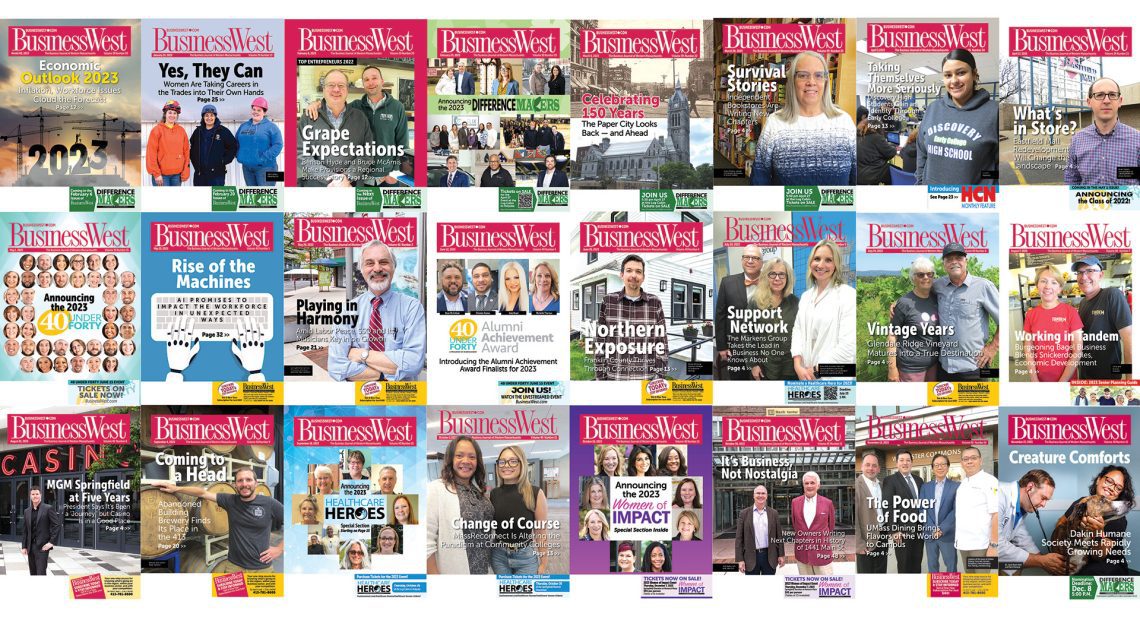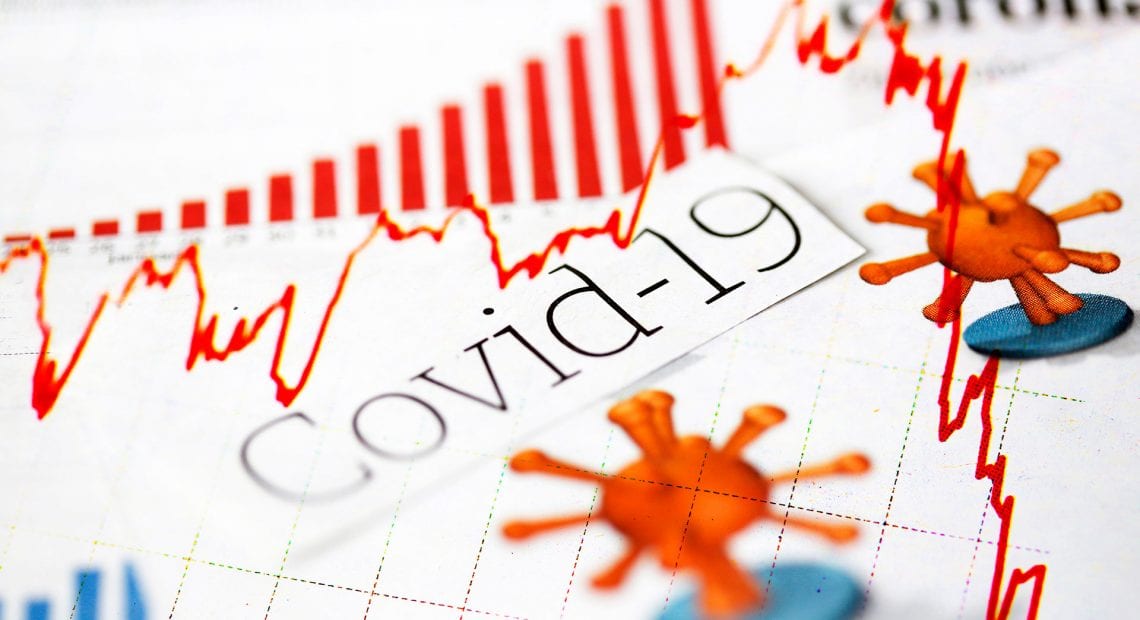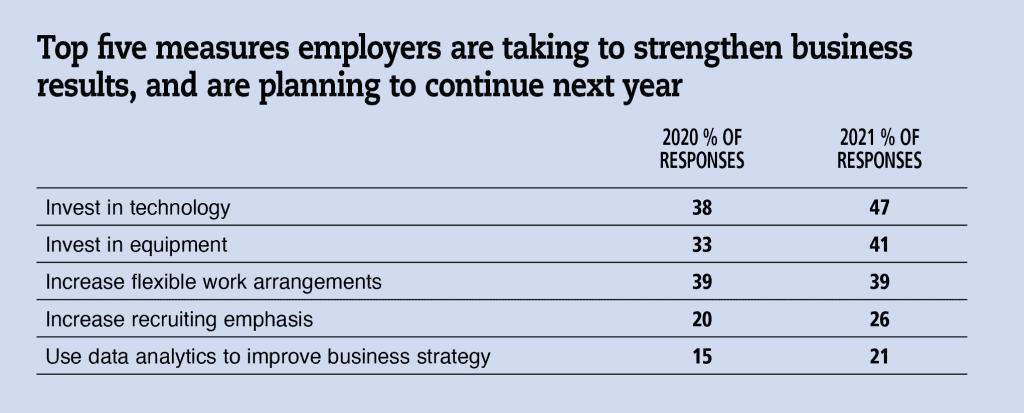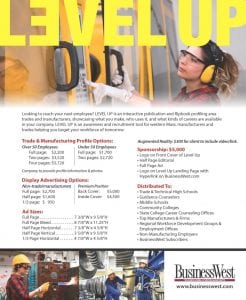A Year of Challenge and Progress
By Joseph Bednar and George O’Brien
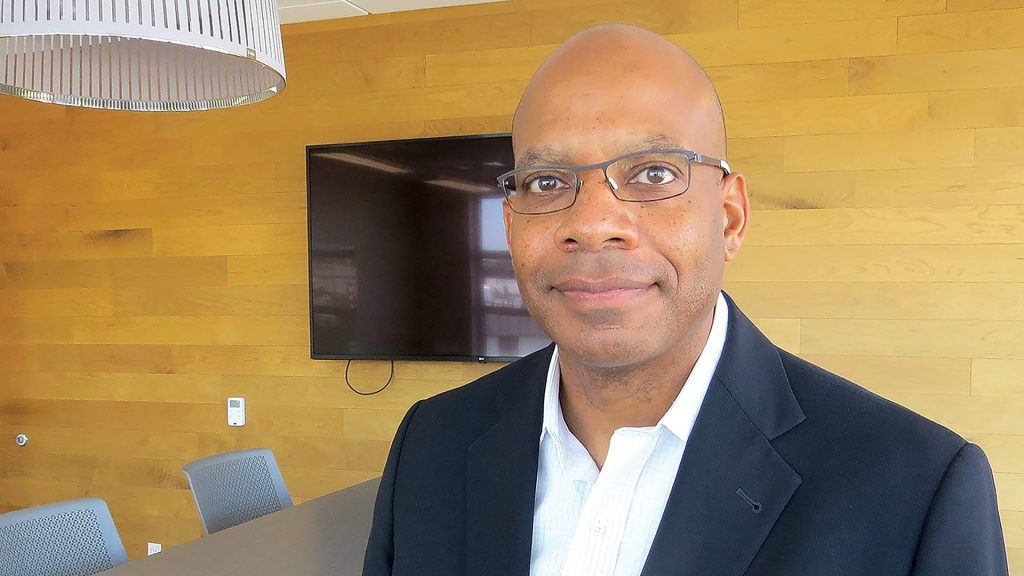
Way Finder CEO Keith Fairey says the housing crisis has been years in the making and results from several factors, including a lack of investment in new housing.
One one hand, every year removed from the pandemic of 2020 is a step toward normalcy, and, for the most part, business rolled on in 2023 — but the effects of that pivotal year still linger, through persistent challenges like inflation, workforce shortages, the deepening roots of remote work, and behavioral-health crises.
But other trends have emerged as well, from a harsher landscape for cannabis businesses to actual movement on east-west rail, to positive developments in downtown Springfield.
As 2024 dawns, undoubtedly bringing a new host of challenges and opportunities, BusinessWest presents its year in review: a look back at some of the stories and issues that shaped our lives, and will, in many cases, continue to do so.
The Housing Crisis Deepens
One of the more poignant stories of 2023 was a deepening housing crisis that is touching virtually every community in this region, the state, and many parts of the country.
“We got here over decades of underinvesting in housing production nationally, and not tuning that production to the needs and demographic changes of communities,” Keith Fairey, president and CEO of Springfield-based Way Finders, told BusinessWest in an interview this fall, adding that a resolution to this crisis won’t come quickly or easily, either.
“One of the things we have to do is make sure Massachusetts remains a competitive state for years to come. And one of the main indicators of whether you are competitive is ‘can people afford to live in this state?”
The major challenges involve not only creating more housing, because not much was built over the past few decades, but housing that fals into the ‘affordable’ category.
Indeed, state Rep. John Velis, a member of the Senate’s Housing Committee, said there are many side effects from the housing crisis, especially when it comes to the state’s ability to retain residents. “One of the things we have to do is make sure Massachusetts remains a competitive state for years to come. And one of the main indicators of whether you are competitive is ‘can people afford to live in this state?’”
Inflation and Interest Rates
The Fed was on a mission in 2023 — to tame inflation but without putting the country into recession, as it famously did in the ’80s. By and large, it was mission accomplished.
Indeed, the latest data on inflation showed a 3% increase over last year in November, a significant improvement on the numbers from late last year and early this year. Meanwhile, the country seems to have avoided a recession, with the economy expanding at a seasonally adjusted, annualized rate of 5.2% in the third quarter, after generating 2.2% annualized growth in the first quarter and 2.2% in the second quarter. In short, the economy actually accelerated, rather than slowing down, due to persistently strong consumer spending.
Efforts to stem inflation by raising interest rates were not without consequences, though, as the housing market cooled tremendously, if not historically. And commercial lending cooled as well, as many business owners took a wait-and-see approach with regard to where interest rates were headed.
New Challenges for Cannabis
Is the ‘green rush’ over for the cannabis industry in Massachusetts? If so, the Bay State is simply following the pattern of every other state that legalizes the drug.
According to that well-told story, the first dispensaries on the scene are bouyed by a favorable supply-and-demand equation — and long lines of customers. But as the market is flooded with competitors — not only locally, but from across state lines — not everyone survives, as a series of business closings this year demonstrates. In fact, according to the Cannabis Control Commission, 16 licenses in Massachusetts have been surrendered, not been renewed, or been revoked by the agency.
The heightened competition has caused retail prices to plummet for an industry already beset by profit-margin challenges. Unfavorable federal tax laws surrounding the growth, production, and sale of cannabis, coupled with local and state tax obligations and continued federal roadblocks to financing, transport, and other aspects of business have made it increasingly difficult to turn a profit. On the latter issue, federal decriminalization would ease the challenges somewhat, but progress there has been frustratingly slow.

Steven Weiss, shareholder at Shatz, Schwartz and Fentin, says he’s surprised lawmakers haven’t moved more quickly toward decriminalizing cannabis on the federal level.
Workforce Challenges Continue
While many businesses and institutions, including the region’s hospitals, reported some progress in 2023 when it comes to attracting and retaining talent, workforce issues persisted in many sectors, especially hospitality.
Indeed, across the region, many restaurants have been forced to reduce the number of days they are open, and some banquet facilities have been limiting capacity due to challenges with securing adequate levels of staff.
Those are some of the visible manifestations of a workforce crisis that started during the pandemic and has lingered for a variety of reasons, from the retirement of Baby Boomers to an apparent lack of willingness to accept lower-wage positions in service businesses.
The ongoing crisis has led to stiff battles for help in certain sectors, including manufacturing, the building trades, engineering, and healthcare, among others, resulting in higher wages, more benefits, and greater flexibility when it comes to where and when people work, which brings us to another of the big stories in 2023…
Remote Work, Hybrid Schedules Gain More Traction
While some larger employers succeeded in bringing everyone back to the office in 2023, most have decided not to even try. Indeed, there was more evidence in 2023 that remote work and hybrid schedules have become a permanent part of the workplace landscape.
In interviews with employers large and small, a persistent theme on this topic has been the need to be flexible when it comes to schedules, and especially where people work. Many businesses, from banks to architecture firms to financial-services companies, have found that employees can be effective and productive working remotely, with many favoring a hybrid schedule that brings people to the office a few days a week. Such flexibility makes employees happier, they said, making it easier to attract and retain talent.
This pattern is causing some anxiety in the commercial office market amid speculation that companies will be seeking smaller spaces moving forward, but the full impact of the shift to remote work and hybrid schedules may not be known for years.
Movement on East-west Rail
This story might continue to inch down the tracks, so to speak, for years before the engine really starts moving, but after many years of debate, planning, and crunching the numbers, actual progress is emerging in the effort to connect Pittsfield with Boston by rail, with stops in Springfield, Palmer, and Worcester, among others.
“We can also make progress in breaking cycles of intergenerational poverty by helping residents complete their higher-education credentials so they can attain good jobs and build a career path.”
The big news this past fall was a federal grant of $108 million to Massachusetts for rail infrastructure upgrades, and Gov. Maura Healey also signed off on $12.5 million in DOT funding in the state’s FY 2024 budget toward the effort.
The additional east-west service would complement passenger trains now running north-south through Springfield’s Union Station, offering access to points from Greenfield to New Haven.
“The facts are simple: improving and expanding passenger rail service will have a tremendous impact on regional economies throughout Massachusetts,” U.S. Rep. Richard Neal said. “That is why we will continue to invest in a project whose framework has the potential to serve as a model for expanding passenger rail service across the country.”
Free Community College
Almost 2 million Massachusetts residents are over age 25 without a college degree. MassReconnect aims to change that, by offering free tuition and fees — as well as an allowance for books and supplies — at any of Massachusetts’ community colleges for residents over age 25.
Gov. Maura Healey pitched it as a strategy to generate more young, skilled talent in the workplace at a time when businesses are struggling to recruit and retain employees (more on that later). “We can also make progress in breaking cycles of intergenerational poverty by helping residents complete their higher-education credentials so they can attain good jobs and build a career path,” she added.

New HCC President George Timmons says “community colleges are, to me, a great pathway to a better life.”
Holyoke Community College President George Timmons called the initiative “an exciting moment for HCC and all Massachusetts community colleges,” adding that “MassReconnect will enable our community colleges to do more of what we do best, which is serve students from all ages and all backgrounds and provide them with an exceptional education that leads to employment and, ultimately, a stronger economy and thriving region.”
New Higher-education Leadership
Speaking of Timmons, he was among the new presidents at the region’s colleges and universities, taking the the reins from Christina Royal, who had been at HCC since January 2017. Timmons was previously provost and senior vice president of Academic and Student Affairs at Columbia Greene Community College in Hudson, N.Y.
Meanwhile, Danielle Ren Holley, a noted legal educator and social-justice scholar, became the first Black woman in the 186-year history of Mount Holyoke College to serve as permanent president. Since 2014, Holley had served as dean and professor of Law at Howard University School of Law.
And at UMass Amherst, Chancellor Kumble Subbaswamy stepped down after 11 years leading the university, to be succeeded by Javier Reyes, who had been serving as interim chancellor at the University of Illinois Chicago.
“You’re not coming in to repair something, but to build on the shoulders of giants — and that is a very attractive opportunity,” Reyes said. “You’re not trying to catch up; you’re really trying to move and set the direction and be a forward leader. It comes with more pressure, but it’s more exciting.”
Thunderous Impact for the T-Birds
The Springfield Thunderbirds released the results of an economic-impact study conducted by the UMass Donahue Institute that shows the team’s operations have generated $126 million for the local economy since 2017.
The study included an analysis of team operations data, MassMutual Center concessions figures, a survey of more than 2,000 T-Birds patrons, and interviews with local business owners and other local stakeholders. Among its findings, the study shows that the T-Birds created $76 million in cumulative personal income throughout the region and contributed $10 million to state and local taxes.
The impact on downtown Springfield businesses is especially profound. Seventy-eight percent of T-Birds fans spend money on something other than hockey when they go to a game, including 68% who are patronizing a bar, restaurant, or MGM Springfield. The study also found that median spending by fans outside the arena is $40 per person on game nights and that every dollar of T-Birds’ revenue is estimated to yield $4.09 of additional economic activity in the Pioneer Valley. Meanwhile, since the team’s inaugural season, it has doubled the number of jobs created from 112 in 2017 to 236 in 2023.
Big Y Opens Downtown
In fact, despite the speed bump posed by the pandemic, downtown Springfield seems to have some momentum again. One of the more intriguing stories of 2023 was the opening during the summer of a scaled-down Big Y supermarket on the ground floor of Tower Square.

The new Big Y Express represents an imaginative use of ARPA funds, addresses a food desert, and contributes to momentum in downtown Springfield.
The development was noteworthy for several reasons. First, it continued the reimagination of Tower Square, which now boasts the Greater Springfield YMCA, White Lion Brewing, two colleges, and other institutions. It also brings a supermarket to what had been a food desert. And it represents an imaginative, community-building use of ARPA funds.
The store opened its doors in June to considerable fanfare, and early results have been solid, with the store becoming a welcome addition to the downtown landscape. Combined with the Thunderbirds’ success, some of MGM Springfield’s strongest revenue months, and the ongoing residential development at the former Court Square Hotel, there’s a lot to be excited about.
New Home Sought for ‘Sick Courthouse’
Not all downtown news emerged from a positive place. Another developing story in 2023 was the ongoing work to secure a replacement for the Roderick Ireland Courthouse on State Street in Springfield, whose dilapidated conditions have been under scrutiny for years and have earned it the nickname the ‘sick courthouse,’ because many who have worked there have contracted various illnesses.
Gov. Maura Healey has called for investing $106 million over a five-year period to construct a new justice center in Springfield, and in November, the Healey administration issued an official request for proposals involving a least two developable acres on which to build a new courthouse. Proposals are due Jan. 31.
While redevelopment of the current site remains an option, Springfield officials are intrigued by the possibility of building not only a new courthouse, but also redeveloping the current site, which is right off I-91 in the heart of downtown.
Weather Challenges for Farmers
It’s called the Natural Disaster Recovery Program for Agriculture, and it exists because Mother Nature hit Massachusetts — in particular, its farmers — hard in 2023.
The state program provides financial assistance to farmers who suffered crop losses as a result of any of three natural disasters: the Feb. 3-5 deep freeze that impacted a large amount of peach and stone-fruit production, the May 17-18 frost that impacted a large amount of apple production and vineyards, and the July 9-16 rainfall and flooding that impacted a large amount of vegetable crops, field crops, and hay and forage crops.
But the government wasn’t alone in the effort to help farmers sustain this triple body blow. Area banks and other oranizations created funds, as did philanthropist Harold Grinspoon — a long-time and notable advocate for farmers through his foundation’s Local Farmer Awards — swiftly pledged $50,000 toward flood-relief efforts following the July rains, distributing checks to 50 farmers impacted by the floods.
Behavioral Health at the Forefront
In August, Baystate Health and Lifepoint Health celebrated the opening of Valley Springs Behavioral Health Hospital, a 122,000-square-foot, four-story facility in Holyoke featuring 150 private and semi-private rooms for inpatient behavioral healthcare for adults and adolescents.
It’s yet another development — the opening of MiraVista Behavioral Health Center in Holyoke in 2021 was another one — that aims to fill an access gap in behavioral health, at a time when the mental-health and addiction needs remain high. The pandemic caused a spike in both, the effects of which are still being felt today.
Dr. Mark Keroack, president and CEO of Baystate Health, said Valley Springs increases the inpatient behavioral-health capacity in the region by 50%. “Until now, about 30% of behavioral-health patients needing care would have to go outside the region. Valley Springs Behavioral Health Hospital will allow us to provide top-quality care for more patients right here in Western Massachusetts.”
Holyoke Celebrates Its 150th
One of the more fun stories of 2023 was Holyoke’s year-long 150th-anniversary celebration. BusinessWest printed a special edition in March to coincide with the St. Patrick’s Day parade, which included stories and photos that celebrated the past and present, while speculating on the future. The many interviews captured the unique essence and character of Holyoke, a close-knit community with a proud history and many traditions.
“There’s been a lot of change over the years, but what hasn’t changed is the spirit of the people,” Jim Sullivan, president of the O’Connell Companies and a Holyoke native, said. “There is a very proud heritage in Holyoke, and it still exists today.”
Said Gary Rome, another native of the Paper City and owner of Gary Rome Auto Group, “there’s a saying … as Holyokers, we can talk bad about Holyoke, but you can’t talk bad about Holyoke.”



